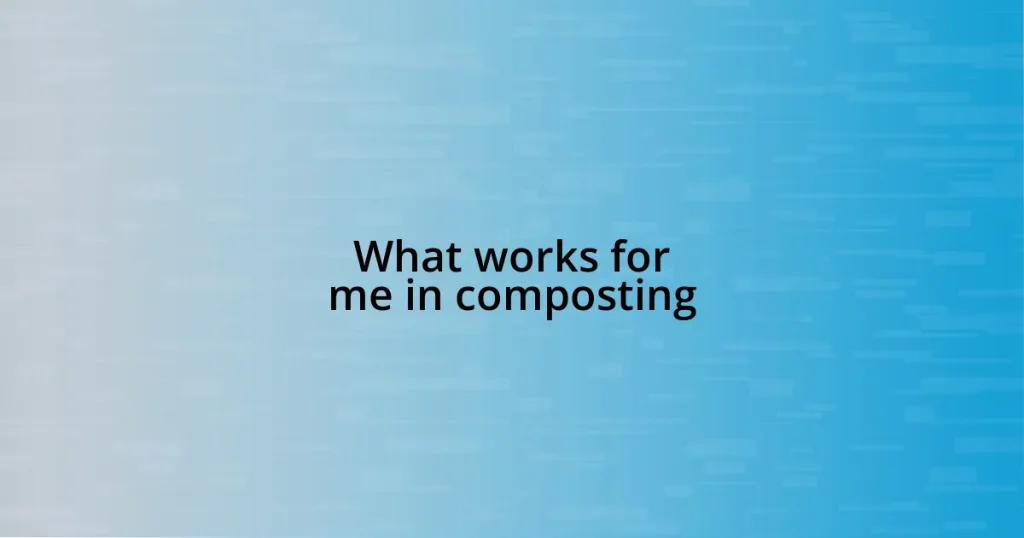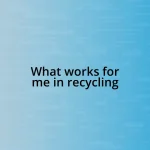Key takeaways:
- Composting effectively requires a balance of “greens” (nitrogen-rich materials) and “browns” (carbon-rich materials) to avoid odors and promote decomposition.
- Choosing the right composting system—traditional piles, bins, or worm bins—affects convenience, tidiness, and pest control.
- Monitoring moisture, temperature, and aeration is crucial for a successful composting experience, impacting the speed of decomposition and final quality.
- Utilizing finished compost properly enhances soil structure, nutrient retention, and plant health, making it essential for effective gardening.
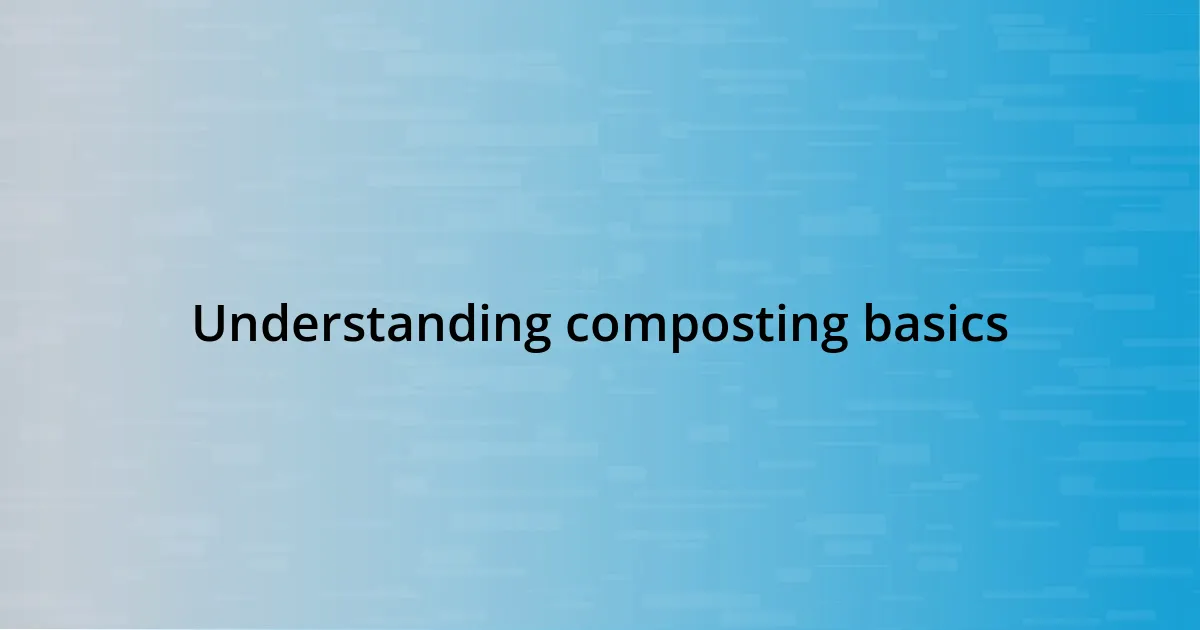
Understanding composting basics
Composting is a natural process that transforms organic waste into nutrient-rich soil. It’s fascinating how simply combining kitchen scraps, yard waste, and some care can create something so valuable. I remember the first time I turned my waste into compost; the sense of accomplishment was genuinely fulfilling.
To compost effectively, you need to balance “greens” and “browns.” Greens include items like fruit scraps and grass clippings, while browns refer to dry leaves and cardboard. Have you ever thought about how much waste we discard every week? I once filled my bin with too many greens, and the smell was a harsh reminder of the importance of this balance.
Aeration is another critical factor in successful composting. By turning your compost pile regularly, you introduce air, encouraging the aerobic bacteria that break down materials. I find it rewarding to see the transformation over time—like watching a magician unveil a trick. It makes me wonder: what wonders could our waste create if we just give it a little time and attention?
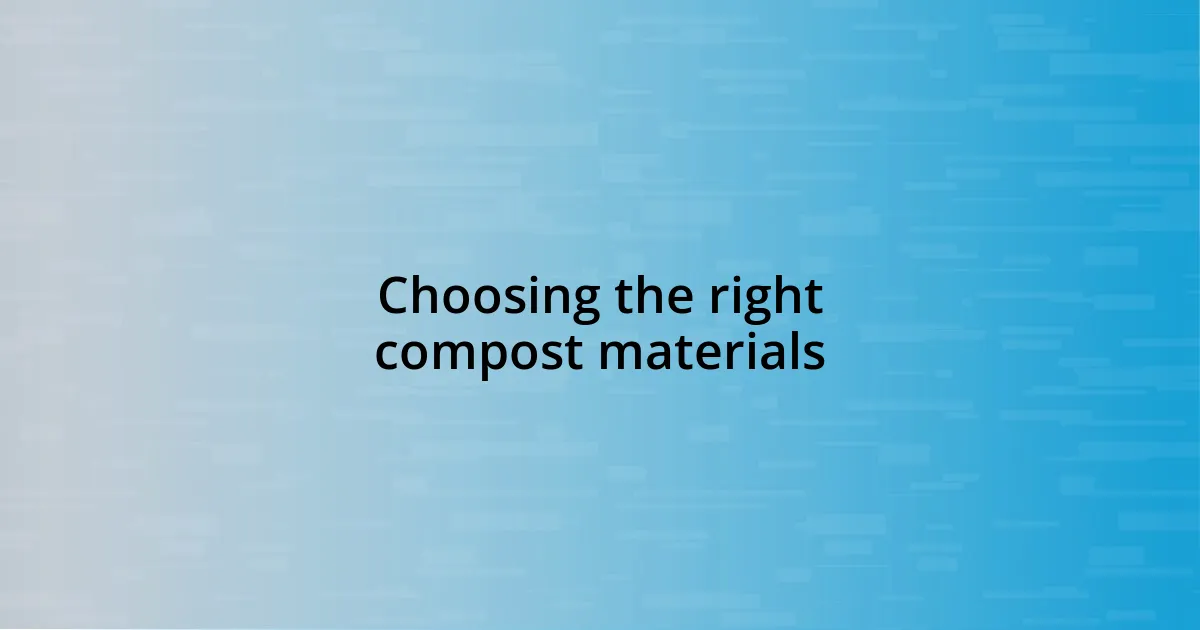
Choosing the right compost materials
Choosing the right compost materials is crucial for creating a thriving compost pile. I’ve learned that not all organic materials are created equal. For example, when I started composting, I tossed in leftover pizza without thinking twice. The result? A wild fungus growth that made me rethink my choices. It’s definitely about being mindful of what you add to your compost.
Here’s a helpful list of compost materials I rely on:
- Greens: Fruit and vegetable scraps, coffee grounds, grass clippings
- Browns: Dried leaves, straw, shredded paper, cardboard
- Other great additions: Eggshells, wood chips, garden trimmings, old herbs
Mixing the right blend of these materials not only speeds up the decomposition but also enhances the quality of the finished compost. I remember the first batch I created with a balanced combination of greens and browns—it was dark, crumbly, and smelled like the earth after a rainstorm. Seeing how the right materials transformed into something so usable reminded me why I started this journey in the first place.
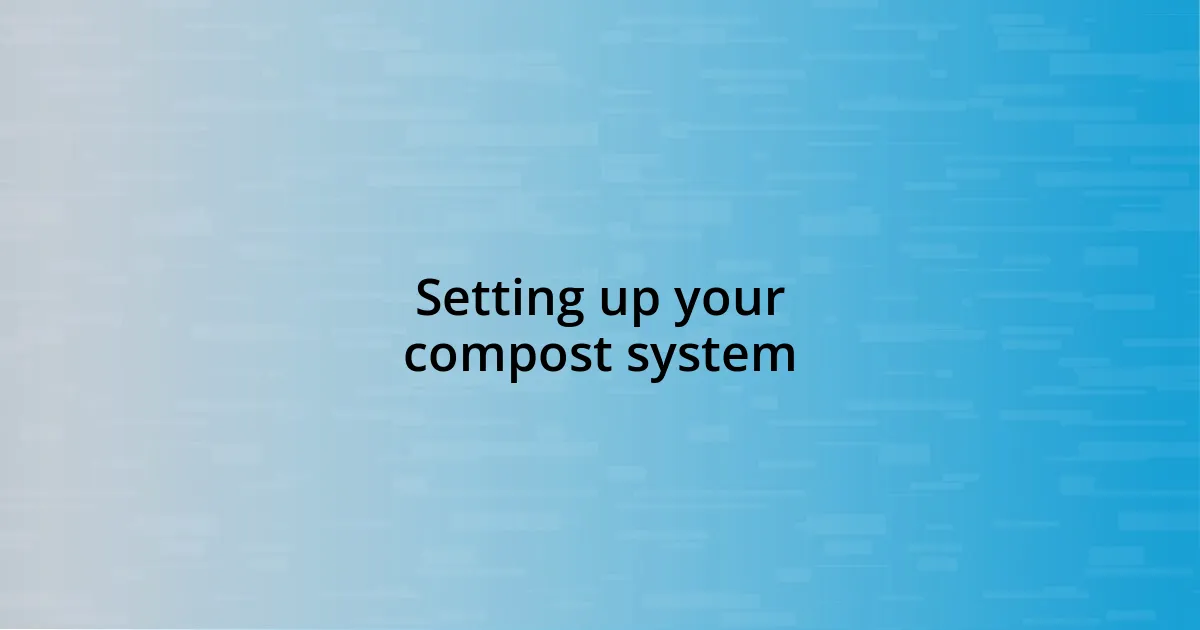
Setting up your compost system
Setting up your compost system is an exciting step in your composting journey. The first thing to consider is location; I’ve found that placing my compost bin in a spot that gets partial sun helps accelerate the decomposition process. When I set mine up near my garden, it made it easy to transport materials back and forth, and I loved the convenience of seeing the whole system come together right outside my door.
Next, you’ll want to choose the right type of composting system. I had a bit of a learning curve when deciding between a traditional pile and a bin system. After experimenting, I discovered that a bin kept things tidier and prevented pests, which was a welcome relief—nothing dampens enthusiasm like a surprise raccoon raid. If you’re in a small space, consider a worm bin, which is both efficient and compact.
Lastly, maintain your compost system by monitoring its moisture and temperature. It’s like nurturing a pet; it requires attention, but the rewards are plentiful! The first time I felt the warm steam rising from my compost pile on a chilly morning was purely magical. It was a reminder that I was taking part in a natural process, one that returned nutrients back to the soil and, ultimately, to my garden.
| Type of Compost System | Benefits |
|---|---|
| Traditional Pile | Simple setup, encourages airflow |
| Compost Bin | Tidier, deters pests |
| Worm Bin | Compact, efficient for small spaces |
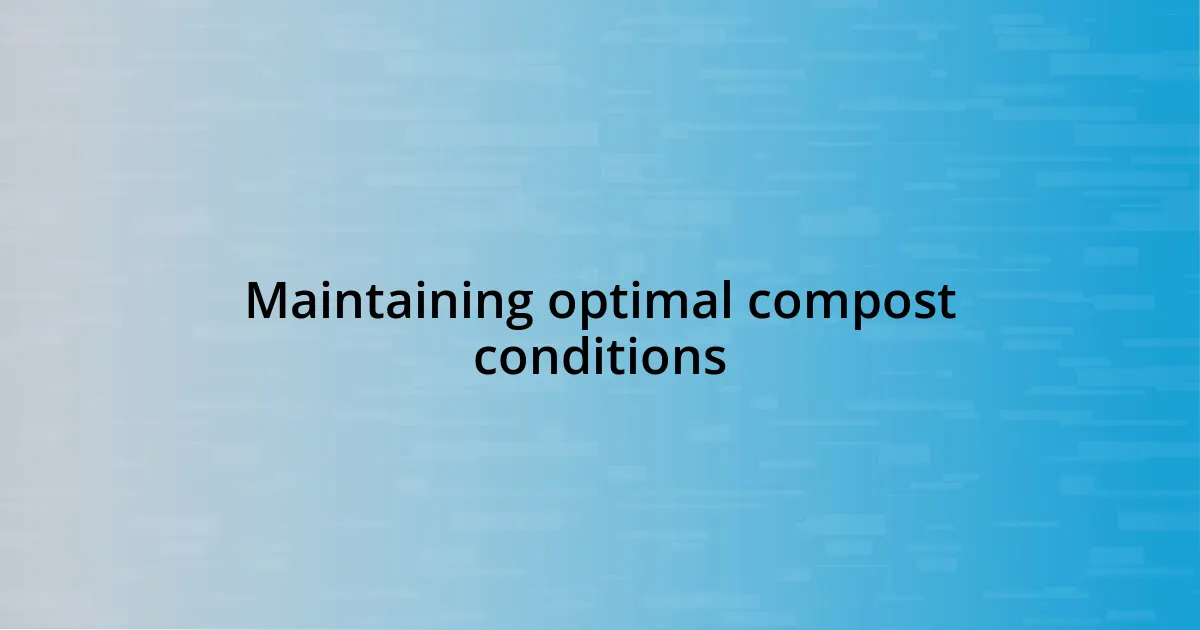
Maintaining optimal compost conditions
Maintaining optimal compost conditions is essential for a successful composting experience. One of the key aspects I’ve discovered is the right moisture level. Too dry, and the decomposition process stalls; too wet, and you risk a smelly mess. I remember my first attempt at composting ended up as a soggy heap of stinking scraps. Since then, I’ve learned to squeeze a handful of compost—if a few drops of water escape, it’s perfect!
Temperature also plays a critical role. I often check the heat of my compost pile with my hand; if it feels warm, I know the microbes are at work, breaking down organic material. The excitement I felt the first time I uncovered steaming compost was a profound moment—like uncovering buried treasure! This warmth reassures me that I’m doing it right and reinforces my commitment to the process.
Finally, I can’t emphasize the importance of aeration enough. Turning the pile regularly not only keeps it well-aerated but also speeds up decomposition. Each time I pivot the compost, I’m amazed at how the materials transform over time. Have you ever felt a pile of raw scraps evolve into lush, rich compost? It’s an incredible feeling that connects you deeply with nature’s cycle.
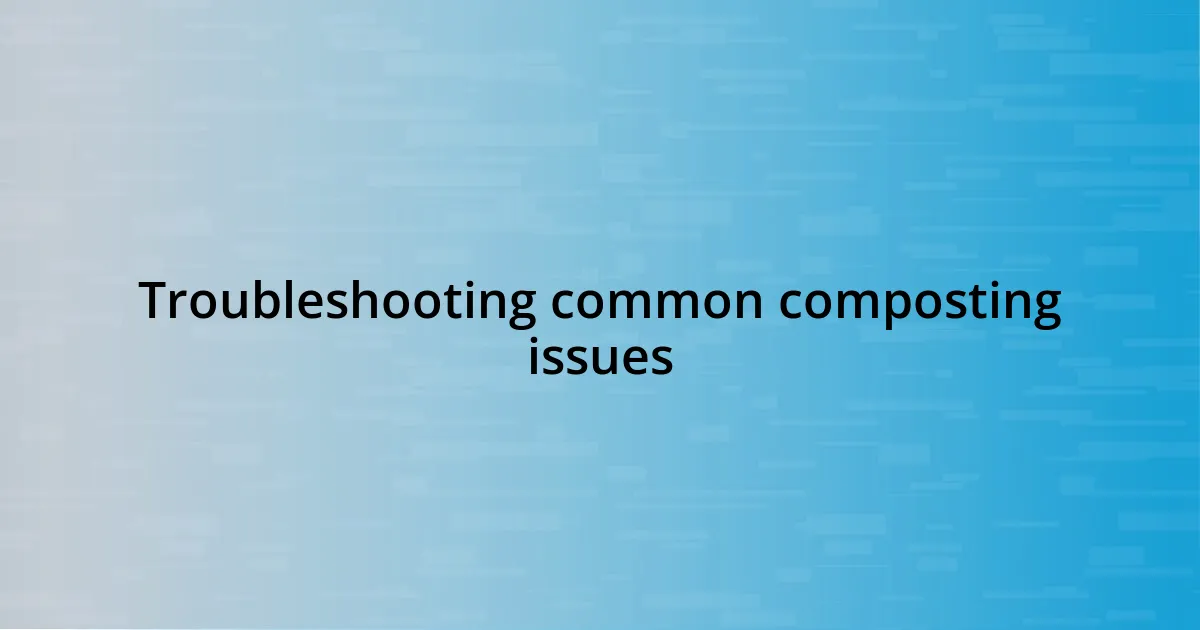
Troubleshooting common composting issues
It’s not uncommon to run into issues while composting. I remember one summer when my compost pile became a bit of a monster, attracting flies and giving off an awful odor. After some reflection, I realized that my mixture was off-balance, too many greens (nitrogen-rich materials) and not enough browns (carbon-rich materials). A simple fix was to layer in dried leaves, shredded paper, or straw, which helped transform that smelly heap into a fragrant, earthy blend. Isn’t it incredible how just adjusting your ingredients can make such a difference?
If you notice your compost pile isn’t heating up, it can be disheartening. I experienced this firsthand when I eagerly waited for my new pile to start steaming, only to find it cold and lifeless. Adding more green materials as well as giving it a good turn revived the microbial activity, and soon enough, I felt that delightful warmth radiating from it again. It’s moments like these that remind me how responsive composting can be; it really does require a bit of nurturing to thrive.
Sometimes, despite all efforts, pests can still intrude. I had a frustrating encounter with raccoons who seemed to think my compost was their late-night buffet. I had to rethink my setup and covered the pile with a mesh screen that kept them at bay while still allowing airflow. It’s funny how even the tiniest adjustments can turn a struggle into a triumph. Have you ever faced a similar challenge? It’s all part of the composting journey!
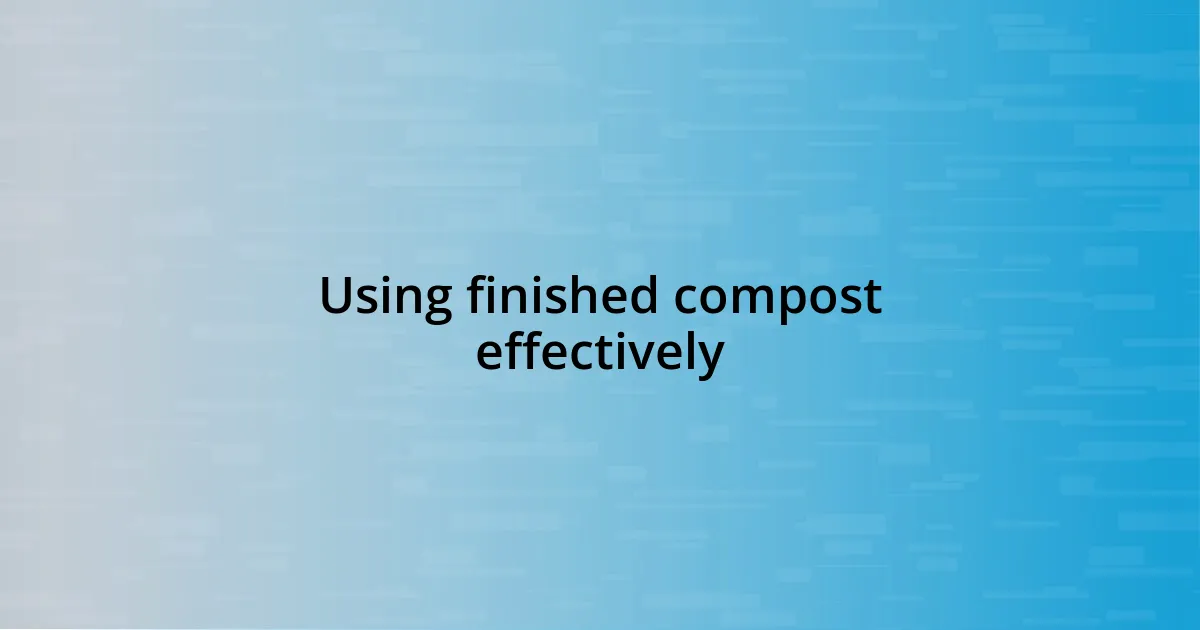
Using finished compost effectively
Using finished compost effectively is a game changer for any gardener. I remember the first time I spread my homemade compost over my flower beds. The vibrant colors and healthy growth of my plants brought such joy to my heart. It’s incredible how finished compost acts not just as a nutrient booster but also enhances soil structure, allowing for better water retention and root growth. Have you ever marveled at how plants seem to respond with gratitude after a fresh layer of compost? It truly feels like a gift.
When incorporating compost into your garden, I find it’s best to mix it into the soil rather than just dumping it on top. During my early gardening days, I made the mistake of simply laying it on the surface. The results weren’t ideal; nutrients didn’t get distributed well, and some plants even smothered under thick layers. Now, I carefully work it into the soil, and the transformation is immediately visible—it’s as if the garden breathes a sigh of relief. Isn’t it amazing how the right method can make all the difference?
I’ve also discovered the power of using finished compost as a natural mulch. After I learned about its benefits, I started applying a thin layer around my plants. Not only did it suppress weeds, but it also provided a slow release of nutrients as it breaks down further. I remember seeing my vegetables thrive, and I thought, “Why didn’t I do this sooner?” Using compost in this way feels like giving your garden a warm, cozy blanket—don’t you think it deserves that kind of care?
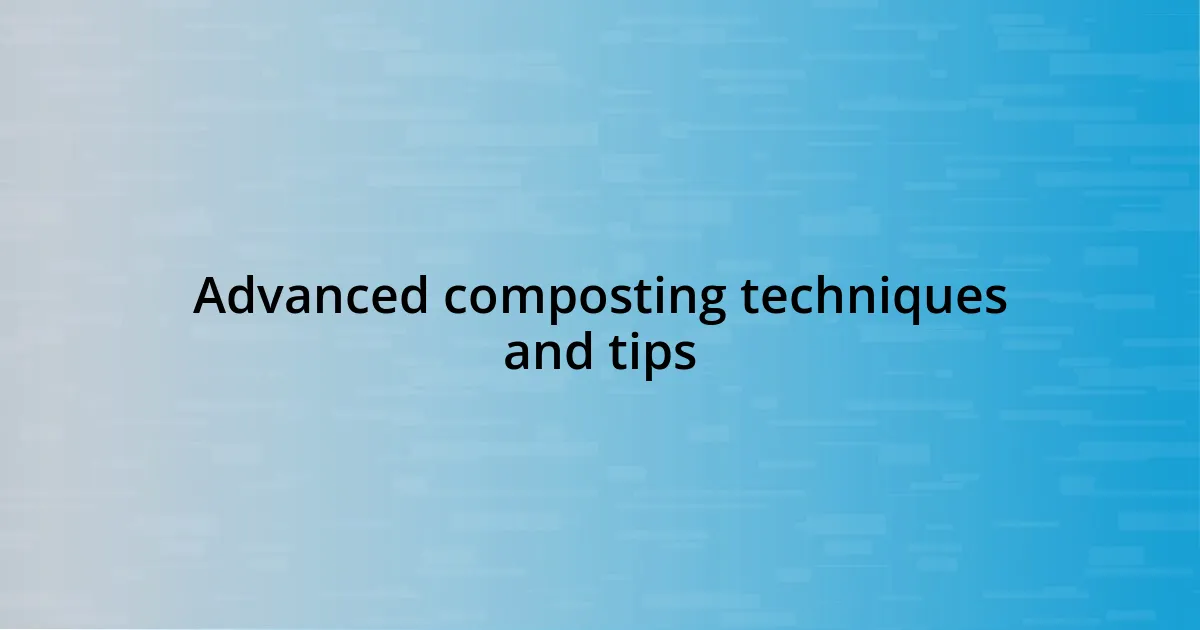
Advanced composting techniques and tips
One advanced technique I’ve found invaluable is thermal composting. I remember the first time I set up a hot compost pile, aiming for temperatures over 130°F. It was exciting to check back after just a couple of days and find the pile steaming! This method not only speeds up decomposition but also helps kill off pathogens and weed seeds. Have you ever noticed how active that kind of heat can feel? It’s like a small ecosystem buzzing with life!
I’ve also discovered the benefits of “compost tea,” a liquid fertilizer made by steeping finished compost in water. I recall one year when my tomato plants were struggling, and a friend suggested this method. After a few applications, it felt like my garden was revitalized; each watering invigorated the plants. Just how enriching can a brew like that be? So much so that I now use it regularly to give my garden a nutrient boost—it’s like a refreshing green smoothie for my plants!
Lastly, I’ve experimented with worm composting, or vermicomposting, which has become a favorite hobby of mine. Watching those little red wigglers break down scraps into rich castings transformed my approach to composting entirely. I often chuckle at how such tiny creatures can create such potent plant food! Have you ever had the chance to spend time with vermicomposters? It’s not just practical; it’s also a delightful way to connect with the natural process of decomposition.











